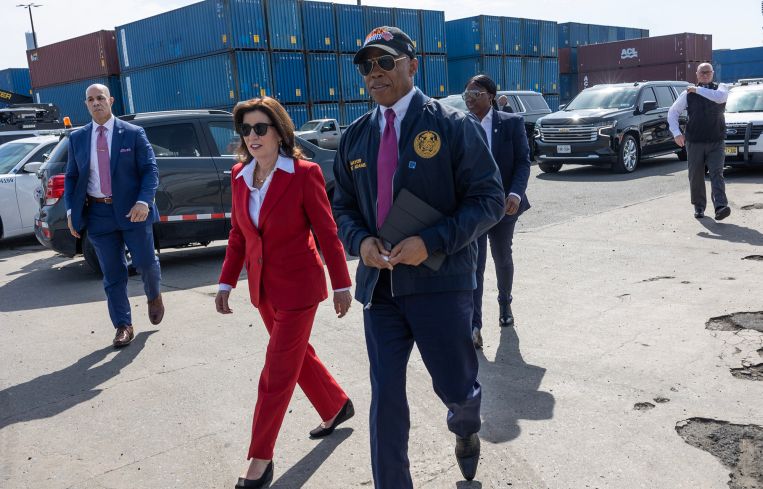Hochul, Adams Announce More Funding for Brooklyn Marine Terminal
By Mark Hallum September 22, 2025 2:20 pm
reprints
The Brooklyn Marine Terminal (BMT) has received $410 million to transform its 122 acres into a modern industrial and residential area.
New York City Economic Development Corporation’s (NYCEDC) BMT Task Force approved the additional funding as New York City plans to usher in the buildout of 6,000 new homes, 275,000 square feet of commercial space, and an equal amount set aside for light industrial uses, according to the Gov. Kathy Hochul and Mayor Eric Adams.
About 60 acres will be used for an all-electric shipping hub with new piers at the terminal.
The Port Authority of New York and New Jersey handed control of the terminal to New York City in May 2024,, before the city and state made a $95 million investment in the facility. By September of that year, another $260 million in grants from the U.S. Department of Transportation was unlocked by the Biden administration.
The Port Authority and NYCEDC will handle the redevelopment.
“The passing of the Brooklyn Marine Terminal Vision Plan is a historic, transformative investment in New York City’s economic future, unlocking thousands of jobs, modernizing critical infrastructure, and creating a resilient, mixed-use waterfront that drives inclusive growth,” NYCEDC CEO Andrew Kimball said in a statement. “This plan positions the city as a national leader in maritime innovation while delivering lasting benefits to the Red Hook community and beyond.”
The redevelopment of the Red Hook, Brooklyn, zone will cost $3.5 billion but could generate $18 billion in revenue, according to the state, which did not say what period of time that return on investment’s maturity.
The task force’s vote also approved the creation of the Brooklyn Marine Terminal Development Corporation (BMTDC) to oversee the transformation of the area.
The redeveloped BMT will support an effort to encourage more maritime shipping, in the hopes of reducing the number of 18-wheelers on the streets of New York City.
“With this step, BMT will be home to a flexible and modern port, acres of publicly accessible waterfront, increased open space and pedestrian prioritized streets,” Tiffany-Ann Taylor, vice president of transportation for the Regional Plan Association, said in a statement. “BMT also presents an opportunity for the expansion of the Blue Highway, which will move more goods by water and reduce our city’s dependency on truck freight.”
Next on the docket for the redevelopment will be the issuance by NYCEDC of a draft environmental impact statement, and Empire State Development’s adoption of a draft general project plan at some point in 2026.
By the end of next year, a request for proposals will be opened up in search of a port operator.
Mark Hallum can be reached at mhallum@commercialobserver.com.



